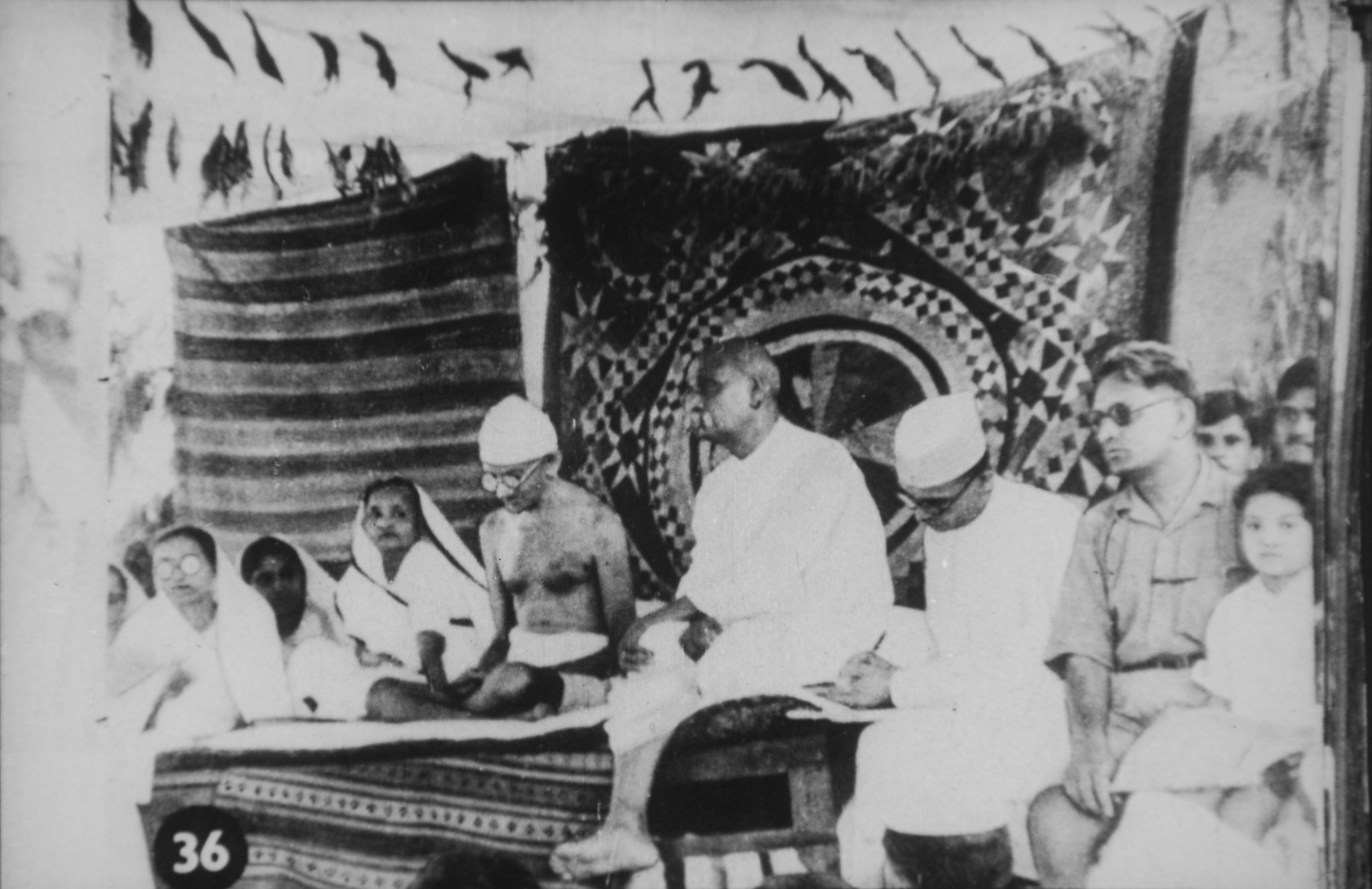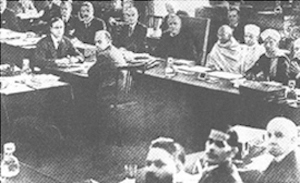Secretary of state, Edwin S.Montagu
and the viceroy of India Lord Chelmsford
wrote an inquiry report regarding participation of Indians and responsible
government in India, this report was published in 1918, Report on Indian
constitutional Reform.
This report served as the basis for the creation of the legislation.
The government of India Act 1919 was passed by the British Parliament
|
·
To increase participation of the Indians in
the government of India.The Act embodied the reforms recommended in the
report of the Secretary of State for India, Edwin Montagu, and the Viceroy,
Lord Chelmsford.
·
The Act covered ten years, from 1919 to 1929.
·
The Act provided a dual form of government (a
"dyarchy") for provinces.
·
Matters of administration
were first divided between the centre and the provinces and then the
provincial subjects were further bifurcated into transferred and reserved
subjects.
The transferred subjects were to be administered by the
governor with the help of ministers responsible to
the legislative council composed mainly of elected members.
The Transferred subjects are: (1) Education, (2) Libraries, (3) Museums, (4) Local Self-Government, (5) Medical Relief, (6) Public Health and Sanitation, (7) Agriculture, (8) Cooperative Societies, (9) Public Works, (10) Veterinary, (11) Fisheries, (12) Excise, (13) Industries, (14) Weights and Measure, (15) Public Entertainment, (16) Religion and Charitable Endowments, etc. The reserved subjects were to remain the responsibility of the governor and his executive council which was not responsible to the legislature. Governor got the power to override ministers and executive council. The Reserved Subjects are: (1) Land Revenue, (2) Famine Relief, (3) Justice, (4) Police, (5) Pensions, (6) Criminal Tribes, (7) Printing Presses, (8) Irrigation and Waterways, (9) Mines, (10) Factories, (11) Electricity, (12) Labour Welfare and Industrial Disputes, (13) Motor Vehicles, (14) Minor Ports, etc. |
The effect of government of India Act 1919 –
(1) To introduce the bicameral or two chamber system in the Indian legislative council
(2) To increase the size of the provincial legislative council , to increase number of the elected members in each
(3) To substitute direct for indirect election
(4) To enlarge the electorate
This act applied the principal of communal representation to Muslims, Sikhs, Anglo-Indians, and Indian Christians etc.
The Indian legislature council was to be called as the Indian legislature.
|
·
The
Indian legislature consisted of governor general and two chambers, the
council of state and the legislative assembly.
·
The council of state
consisted of 60 members nominated or elected under the rules, of whom not more than twenty
were to be official members.
·
Thus
council got 33 elected members and 27 nominated by the governor general of
whom not more than 20 could of officials.
·
The legislative
assembly consisted of 143 members.
·
The
number of non elected members was 40 of whom 25 were official members and 15
non officials.
·
The
number of elected member was 103.
·
To pass a
law, including financial bills consent of both houses was required.
·
The power
of both houses were same exception was power to vote supply was allowed only
to the Legislative assembly.
·
The
duration of council was fixed at 5 and of the assembly at three years.
·
The
governor general got the power to dissolve either house or to extend its
existence if necessary.
·
The
members were elected by a process of direct election, in hope that the people
will choose people to represent them.
|
Thus Hindus started to elect Hindus and Muslims elected Muslims and also there was communal representation.
The act of 1919 did not introduce federalism in India.
Governor General in council got the power and authority to decide whether a particular subject was central or provincial subject.
|
World War I was important for India’s
nationalist movement. Indians of all persuasions overwhelmingly supported
Great Britain and the Allied cause during the war. Nearly 800,000 Indian
soldiers plus 500,000 noncombatants served in Europe and the Middle East.
Communal
relations between Hindus and Muslims took several turns between the passage
of the India Councils Act in 1909 and 1919. The reunion of Bengal in 1911
(which canceled its partition into two provinces) pleased the Hindus but
antagonized the Muslims. The All-India
Muslim League began to attract younger and bolder leaders, most notably a
brilliant lawyer named Mohammad Ali Jinnah (1876–1946). Similarly
Mohandas K. Gandhi (1869–1948) and Jawaharlal Nehru (1889–1967) emerged as
leaders of the Indian National Congress. Many in India’s Muslim minority
became concerned with the ultimate fate of the Muslim Ottoman Empire, which
fought in the opposing Central Powers camp. World War I also aroused both the
congress and the league to demand significant constitutional reforms from
Britain. In 1916 they concluded a
Congress- League Scheme of Reforms, known as the Lucknow Pact. It made
wide-ranging demands for greater self-government, equality of Indians with
other races throughout the British Empire and Commonwealth (in response to
racial discrimination in South Africa and Canada), and greater opportunities
for Indians in the armed forces of India.
In response, the
new secretary of state for India, Edwin Montagu, officially announced the
British government’s commitment to “the gradual development of self-governing
institutions with a view to the progressive realization of responsible
government in India” in August 1917. He then toured India, met with Indian
leaders, and together with Viceroy Lord Chelmsford drafted a Report for
Indian Constitutional Reform in 1918, popularly called the Montagu-Chelmsford
Report. A modified version of the report was embodied in the Government of
India Act of 1919. It introduced partial self-government to India’s nine
provinces in a system called dyarchy, whereby elected representatives
controlled the departments of agriculture, sanitation, education, and so on,
while the British-appointed governor and his advisers retained control of
finance, the police, prisons, and relief. This was intended as a step toward
complete responsible government. The viceroy, however, retained control of
the central government, and the role of the mostly elected bicameral
legislature remained advisory. The electorate was expanded, and separate
electorates (Muslims elected their own representatives) were kept in place,
on Muslim insistence.
The Government of
India Act was a significant advance in India’s freedom movement. Others
included a separate Indian delegation to the Paris Peace Conference in 1919,
in the same manner as the self governing dominions (Canada, Australia, New
Zealand, and South Africa). India also became a member of the League of
Nations. But these advances did not satisfy Indian nationalists, who were
inflamed by the continuation of wartime laws that abridged civil freedoms,
and acts of peaceful and violent resistance continued. Hindu-Muslim accord
continued during the Khalifat movement, when Indians supported the Ottoman
emperor’s religious leadership as caliph of Islam. The cooperation collapsed
when Mustafa Kemal Atatürk established a republic in Turkey and abolished the
caliphate in 1923 and also due to increasing competition between the two
communal groups for power in a future independent India.
|









